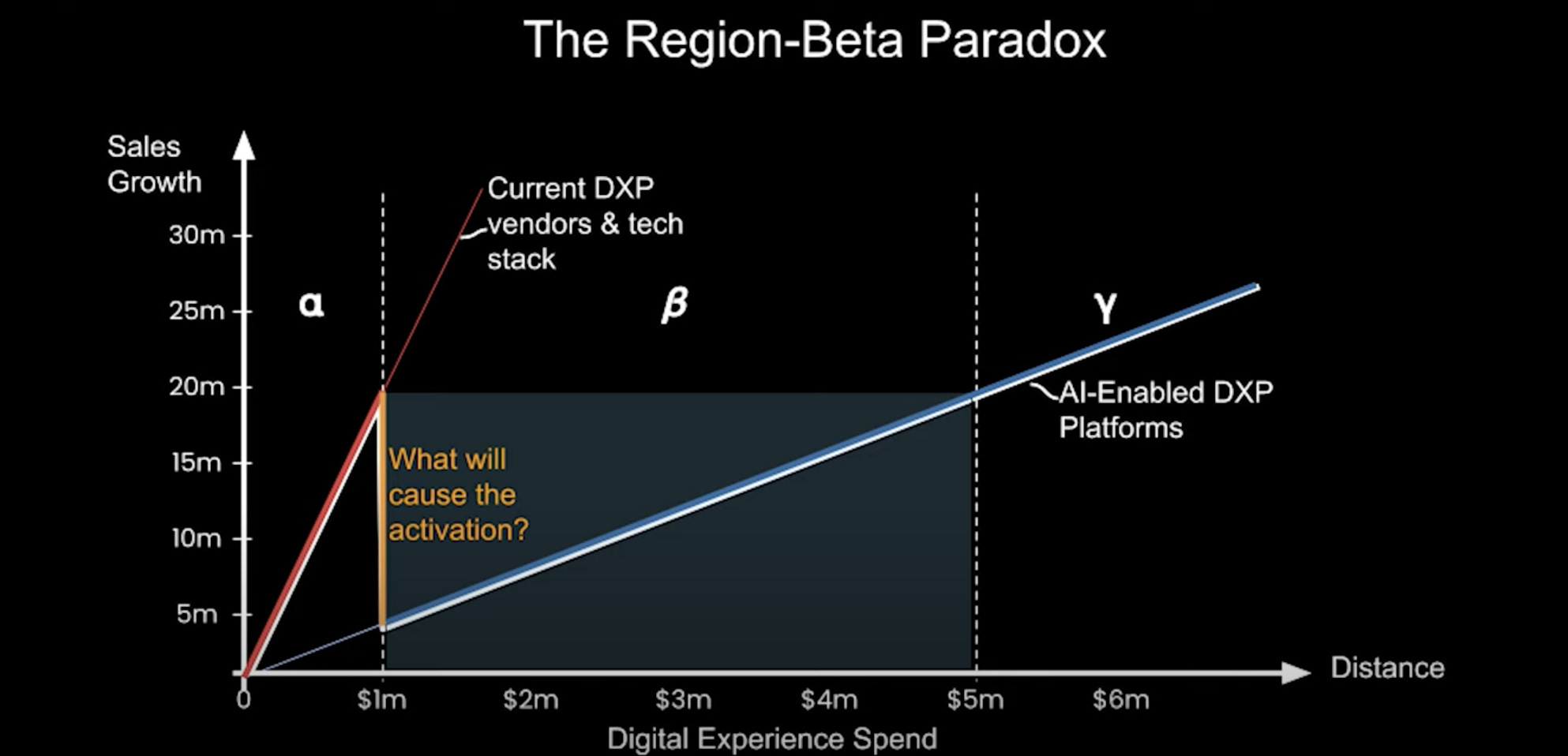Conversational AI has emerged as a game-changer in the realm of customer engagement. During the CommerceNext 2023 Ecommerce Growth Show, Christian Ward, Chief Data Officer at Yext, shed light on how conversational AI is unlocking the full potential of chatbots, transforming the customer experience and optimizing business operations. In this blog, we’ll delve into the key insights from the session, providing actionable takeaways for marketers looking to leverage conversational AI effectively.
The Evolution of Conversational AI
Until recently, the internet primarily answered the questions of who, what, where and when. However, with the advent of artificial intelligence, we’re now equipped to tackle the ‘how’ and ‘why’ of customer inquiries. This journey can be categorized into three phases: search, query and dialog. Currently, AI chat finds itself in the transitional phase between query and dialog, a space ripe for innovation (see below).

Overcoming Chatbot Limitations
One of the challenges with AI chat has been its reliance on simplistic “if, then” loops, limiting its effectiveness. However, recent advancements, particularly in the form of Large Language Models (LLMs), have revolutionized the landscape. LLMs have empowered us to guide chatbots beyond the constraints of training data, providing a more dynamic and responsive conversational experience.
Retrieval Augmented Generation: A Paradigm Shift
Traditionally, chatbots operated based on predefined responses stored in memory. Yext’s framework, known as retrieval augmented generation, represents a shift in this paradigm. This technique rephrases search algorithm results in real time to better align with the ongoing conversation. This innovation has opened up new possibilities, including case deflection, agent desktop enhancement and improved support services.
Content Generation in the Age of AI
Content creation has witnessed a seismic shift with the introduction of generative AI. However, in an era of content saturation, major search engines are increasingly guarded about revealing their sources. This necessitates a fresh approach to content strategy, focusing on quality, relevance and uniqueness.
The Region-Beta Paradox: Catalyst for Change
Change is often driven by the severity of existing problems. The region-beta paradox (see below) highlights the need for substantial issues to spur innovation. In today’s digital landscape, companies face unprecedented competition, emphasizing the critical importance of standing out in the crowded marketplace.

Optimizing Data for AI Success
To fully harness the power of AI, businesses must prioritize data organization. This foundational step ensures that AI technologies can deliver the most accurate and valuable insights. With data acting as the lifeblood of modern marketing, this investment is essential for success.
The Cost of a Click: Navigating the Google Conundrum
In the digital marketing landscape, one of the most expensive clicks is the one that leads back to Google. To mitigate this cost, businesses must focus on delivering exceptional experiences from the moment a user arrives on their site. This entails moving beyond generic search and ‘if, then’ chat responses and leveraging the potential of AI chatbots.
Embracing a Million Entities Approach
Christian Ward advocates viewing a business as a collection of countless entities in some sort of structured knowledge. This perspective highlights the importance of granularity in understanding customer needs, preferences and behaviors. By breaking down the business into these discrete elements, marketers can unlock new levels of personalization and effectiveness.
Conversational AI represents a monumental shift in how businesses engage with customers. The insights shared by Christian Ward at the CommerceNext 2023 Ecommerce Growth Show offer a roadmap for marketers seeking to harness the full potential of this transformative technology. By embracing retrieval augmented generation, optimizing data and adopting a nuanced approach to content creation, businesses can revolutionize their customer engagement strategies and lead the charge in this AI-driven era. Embrace the power of conversational AI, and stay ahead of the curve in redefining your organization’s customer experience.
FAQs:
1. What are some specific examples of companies successfully implementing retrieval augmented generation in their chatbots, and what measurable improvements have they seen in customer engagement or operational efficiency?
Specific examples of successful implementation of retrieval augmented generation in chatbots include companies like Google, which employs advanced natural language processing (NLP) models like BERT to dynamically generate responses based on user queries. Measurable improvements in customer engagement include higher user satisfaction scores, increased retention rates, and reduced reliance on human intervention for resolving queries.
2. How does the region-beta paradox influence the pace and direction of innovation in the development and adoption of conversational AI technologies across different industries and geographic regions?
The region-beta paradox refers to the phenomenon where innovation is often driven by the severity of existing problems or challenges within a particular region or market segment. In the context of conversational AI, this paradox suggests that the adoption and advancement of AI technologies may vary depending on factors like regulatory environment, infrastructure and market demand. For example, regions with high competition or stringent regulations may experience faster adoption of AI-driven solutions to stay competitive or comply with regulatory requirements.
3. Can you provide more insights into the practical steps businesses can take to optimize their data organization for AI success, especially considering the vast amount of data available and the need for accuracy and relevance in delivering valuable insights?
Practical steps for optimizing data organization for AI success involve several key strategies:
- Data Governance: Establish robust data governance policies to ensure data quality, accuracy, and compliance with regulations such as GDPR or CCPA.
- Data Integration: Integrate data from various sources, including CRM systems, transactional databases, social media platforms and third-party sources, to create a unified view of customer data.
- Data Cleansing: Regularly clean and preprocess data to remove duplicates, errors and inconsistencies, ensuring that AI models are trained on reliable and relevant data.
- Feature Engineering: Identify and extract relevant features from raw data to enhance the predictive power of AI models and improve decision-making.
- Model Training and Validation: Train AI models on labeled datasets and validate their performance using techniques like cross-validation or holdout validation to ensure accuracy and generalization.
- Continuous Improvement: Implement processes for monitoring model performance in production, collecting feedback and iteratively improving models over time to adapt to changing data patterns and business requirements.
Related Posts
-
Physical Retail Trends & Preparing for Holidays
Nothing compares to the experience of shopping from the comfort…
-
Unlocking Social Commerce Success: Strategies to Stand Out and Profit
As platforms like Facebook, Instagram, Snapchat and TikTok continue to…
-
How AI-Driven Hyper-Personalization & Smarter Engagement Drives Revenue
In our latest CommerceNext webinar, retail leaders from KEEN Footwear,…




